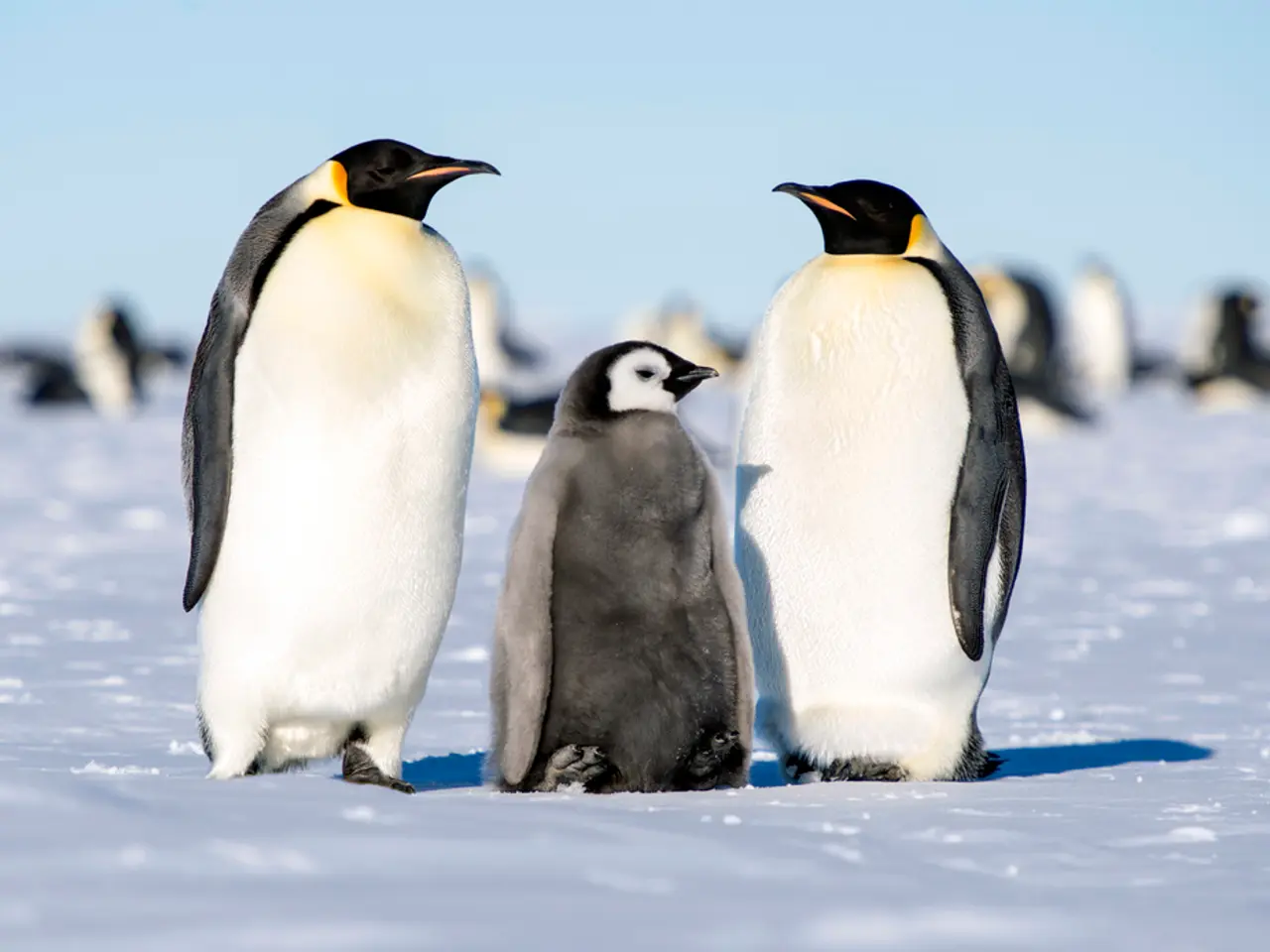Researchers Discover Mobile Algae Species Thriving within Icy Arctic Conditions at a Bone-Chilling -15°C
In the vast expanse of the Arctic Ocean, a group of single-celled algae known as diatoms has been found to exhibit remarkable mobility and resilience, according to a study conducted by researchers at Stanford University.
The study, led by postdoctoral scholar Qing Zhang and postdoctoral researcher Hope T. Leng, was published in the Proceedings of the National Academy of Sciences. During a 45-day summer expedition in the Chukchi Sea, the researchers collected ice cores from 12 locations and made a series of fascinating discoveries.
Among the findings was the observation of diatoms, primarily from the genus Navicula, moving within the ice cores. These Arctic diatoms were found to be gliding smoothly along surfaces that should have been frozen, a phenomenon not observed in their temperate counterparts.
The unique adhesion of Arctic diatoms to ice may involve specialized ice-binding proteins. The diatoms secrete a polymer, similar to snail mucus, that allows them to move. This mucilage contains the same molecular machines that power human muscles: actin and myosin.
Arctic diatoms move nearly ten times faster on ice at freezing temperatures compared to their relatives in temperate climate zones. Remarkably, these microorganisms show a higher resilience to cold compared to temperate diatoms, holding fast to icy surfaces even when subjected to force.
The thermodynamic model built by the researchers shows that Arctic diatoms have evolved both lower internal energy demands and external materials that change less with temperature than those of temperate species. This adaptation could be crucial for their survival in the rapidly warming Arctic, where many projections suggest it could be ice-free in summer within the next 25 to 30 years.
The discovery of diatom mobility could potentially influence ice formation and melting in the Arctic. Arctic diatoms are super important in the polar food web, forming the base of an ecosystem that sustains various species, including krill, seals, and polar bears. The loss of Arctic ecosystems could lead to the loss of knowledge about entire branches in the tree of life.
Interestingly, the diatoms found in the Arctic are believed to select specific depths within the ice core for optimal light, nutrients, and salinity. This adaptation could help them survive in the harsh Arctic conditions, but it also raises concerns about the impact of melting ice on these delicate ecosystems.
As the Arctic continues to warm, understanding the adaptations of its organisms, like the motile Arctic diatoms, will be crucial for predicting and mitigating the effects of climate change.
Read also:
- Hospital's Enhancement of Outpatient Services Alleviates Emergency Department Strain
- Increased Chikungunya infections in UK travelers prompt mosquito bite caution
- Kazakhstan's Deputy Prime Minister holds discussions on the prevailing circumstances in Almaty
- In the state, Kaiser Permanente boasts the top-ranked health insurance program





